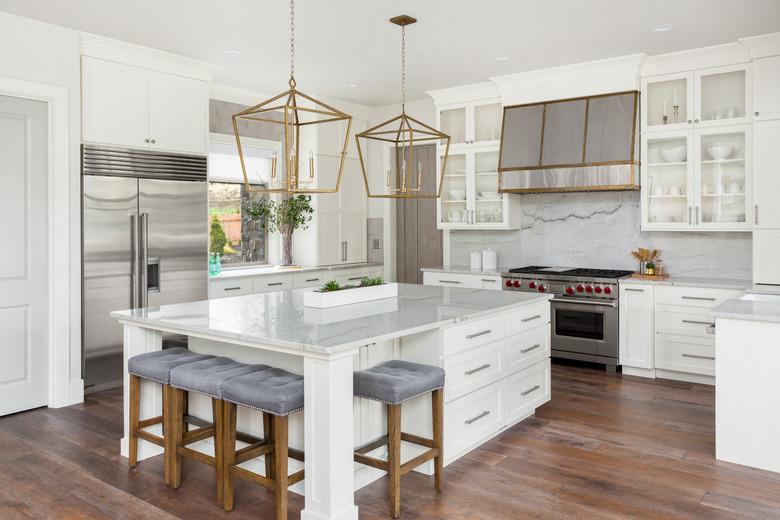How To Remove The Drain Pan From A GE Profile Refrigerator
Water collects inside a refrigerator for several reasons. It could be ice melt from the freezer, condensation on the refrigerator walls or just something you spilled. Whatever the cause, the water needs to drain properly or it will end up feeding mold or pooling on the floor and ruining the flooring.
For this reason, every refrigerator has a drainage system that directs water to a drain pan under the appliance. It used to be common to remove this drain pan to clean it, but as far as GE refrigerators are concerned, that stopped in 1987. If you have a Profile model manufactured later than that, you can't remove the drain pan.
GE Profile Refrigerator Drip Pan Removal
GE Appliances reports that, since 1987, the built-in drip pan has been designed to be difficult to access and isn't removable. If you have a model that predates 1987, you can access the drip pan by removing the front grille. The GE refrigerator drip pan location for these older models is in the left front or middle of the appliance, and you can simply pull it out and empty it.
The reason why GE no longer provides removable drip pans is that, except in extreme circumstances, it shouldn't overflow. The GE refrigerator drip pan location is typically just under the compressor or close enough to it to benefit by the heat generated by the compressor motor. The heat accelerates evaporation and helps keep the refrigerator drip pan dry.
Water on the Floor from the Drainage System
If you see water on the floor under your refrigerator, there's a possibility that the drip pan is overflowing, but since you can't access or remove the drip pan, what do you do? One answer is to clean the drain lines, which are probably clogged. When this happens, the water usually runs down the back of the refrigerator and doesn't even make it to the drip pan, so there's no reason to remove the pan anyway.
You can't always clear a drain clog yourself, particularly if you have a built-in refrigerator. However, it's a DIY project for most freestanding models. The drain opening is usually in the freezer, and you should be able to access it by unplugging the appliance and removing a plastic panel on the back using a screwdriver.
Once you access the drain opening, GE Appliances recommends injecting a solution consisting of 1 tablespoon of baking soda dissolved in 2 cups of hot tap water using a turkey baster. When the drain clears, you'll hear water dripping into the drain pan and you can replace the panel. The water will quickly evaporate from the drain pan.
Leaking Water Supply Lines
If your refrigerator has a water dispenser or ice maker, the water on the floor may be coming from hoses that supply them. Since these are partially hidden inside the refrigerator chassis, you can't fix every leak without some disassembly, but there are a few things you can check and fix fairly easily.
The first thing is the connection between the refrigerator water hose and the supply line in the wall because this connection frequently leaks after you put stress on it by moving the refrigerator. If tightening the connection doesn't stop the leak, try turning off the water, disconnecting it and wrapping plumbing tape around the male connection threads. Call a plumber if this doesn't stop the leak.
Another possible source of the leak is the connection between the main supply hose and the one for the ice maker or water dispenser. You can usually access the connector by removing the front grille or the molding piece on the top hinge of the left-hand door. This connector may need tightening or reseating.
